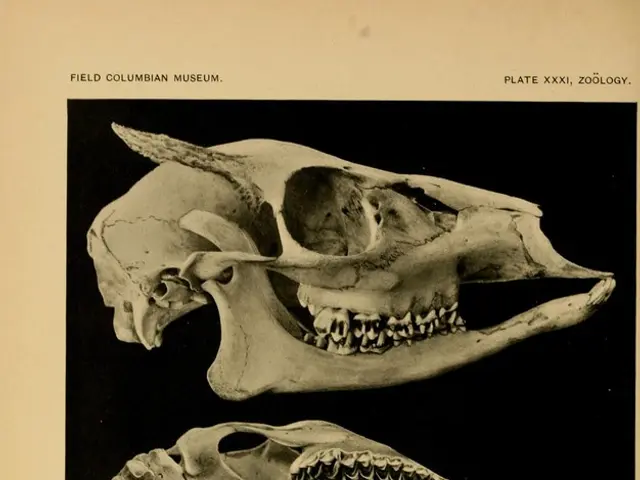Astonishing Astro-Phenomenon: Dormant Supermassive Black Hole Springing Back to Life After Two Decades, Staggering Astronomy Community
In an extraordinary astronomical observation, a distant galaxy, SDSS1335+0728, located approximately 300 million light-years away in the Virgo constellation, has stunned scientists by exhibiting signs of a long-slumbering massive black hole awakening. This galactic event, marked by a significant increase in brightness, is the first real-time observation of such an occurrence.
The nucleus of the galaxy, fueled by a black hole with a mass over one million times that of our Sun, has been observed to radiate intense light across ultraviolet, optical, and infrared wavelengths, with X-ray emissions detected by February 2024, indicating unprecedented activity. These transformations, as detailed in Astronomy & Astrophysics, suggest the black hole has begun consuming surrounding gas, converting the galaxy into one with an active galactic nucleus (AGN).
According to Earth.com, researchers have been monitoring the galaxy's transformation using data from observatories such as the European Southern Observatory's Very Large Telescope. "This distant galaxy had always seemed tranquil and dormant. Suddenly, its core started showing dramatic changes in brightness, unlike anything we've previously observed," said Paula Sanchez Saez, an astronomer at ESO in Germany and lead author of the study currently pending publication in Astronomy & Astrophysics.
This event represents a groundbreaking observation of a black hole transitioning from a quiescent to an active state, shedding light on the enigmatic behavior of these cosmic giants. Co-author Claudio Ricci notes that these "giant monsters" are typically dormant and invisible, making this observation a rare sight into the activation process of a black hole.
While alternative explanations, such as a drawn-out tidal disruption event, are being considered, the sustained brightness over four years distinguishes this phenomenon from typical flares, which fade within months.
The significance of this observation may refine models of black hole growth and galaxy evolution, offering clues about how these cosmic entities influence star formation. Advanced telescopes, like the European Southern Observatory's Very Large Telescope, are being utilized to collect more data, as researchers hope to confirm whether this is a new class of outburst or a slow tidal event, both of which would necessitate revising models of black hole accretion and the frequency of black hole awakenings in the present-day universe.
"Regardless of the nature of the variations, this galaxy offers invaluable information on how black holes grow and evolve," Sanchez Saez added, expressing her hopes for further insights from instruments such as MUSE on the VLT and the forthcoming Extremely Large Telescope. This remarkable observation not only highlights the complex nature of black holes but also paves the way for future discoveries as survey telescopes continue to probe the universe for such extraordinary events.
The extraordinary astronomical observation of SDSS1335+0728 has sparked scientific interest in the realm of space-and-astronomy, as it provides a unique opportunity to study the activity of a black hole. With the help of advanced technology like the European Southern Observatory's Very Large Telescope, researchers are collecting data to understand if this black hole's awakening is a new class of outburst or a slow tidal event, which could influence our understanding of science, particularly regarding black hole growth and galaxy evolution.




